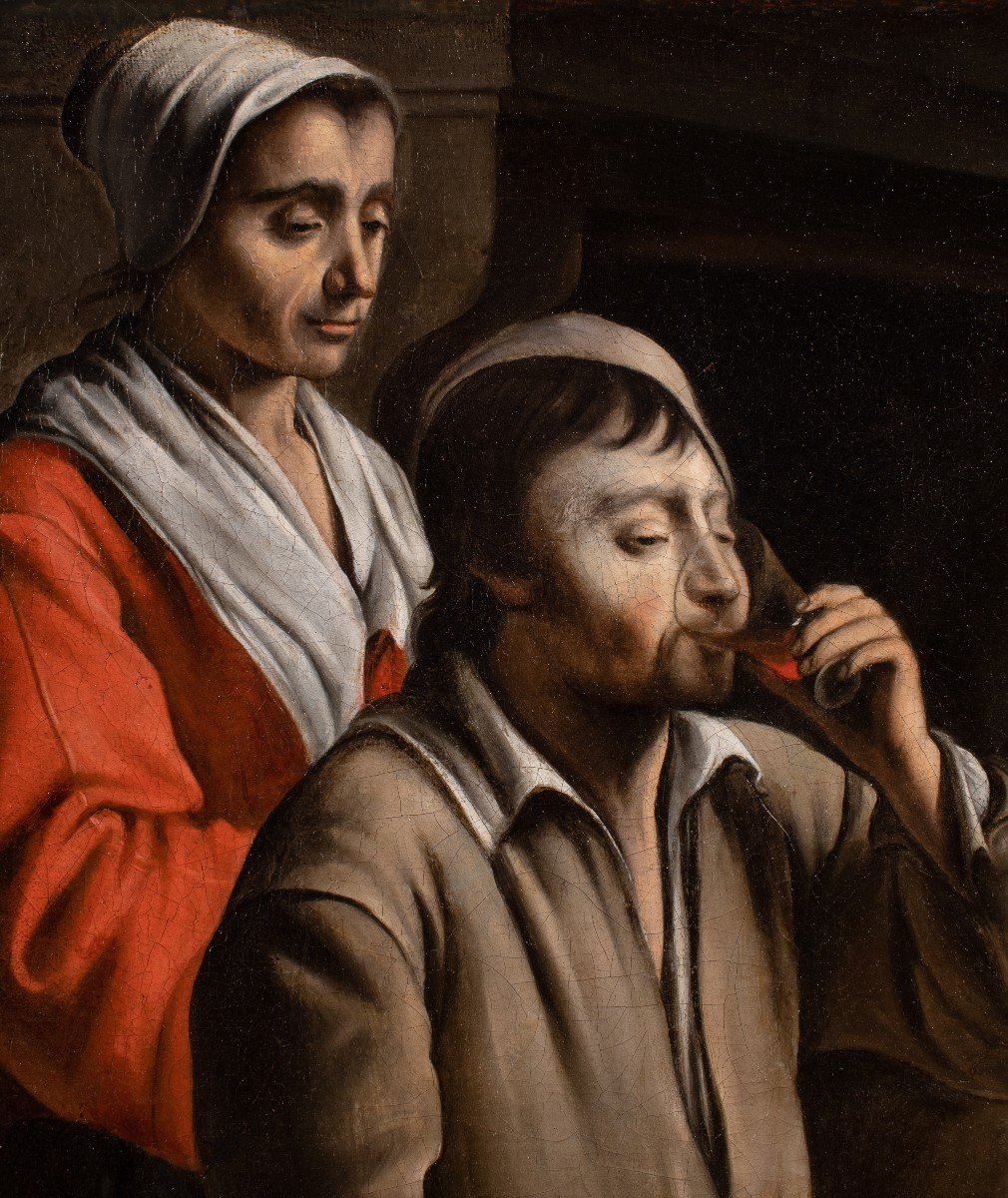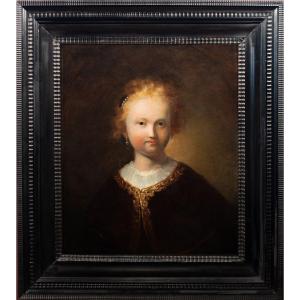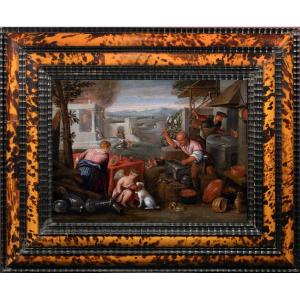Presented in a beautiful carved wooden frame, gilded and in imitation of marble
Dimensions with frame: 109 x 135 cm
Born in Laon and died in Paris, the Le Nain brothers, Antoine (between 1597 and 1607? -1648), Louis (between 1597 and 1607? -1648) and Mathieu (around 1607-1677), are three French painters.
In the realist movement of the time of Louis XIII, the work of the Le Nain brothers illustrates the dual vocation of an art which was constant in its intellectuality as well as in its passion for truth. Contrary to Italianate or Flemish realism, this genre painting, of an almost banal simplicity, knew how to touch contemporaries by its human rather than picturesque side.
We are in the main room, and perhaps unique, of a peasant interior, the warm room, the one that shelters sleep, the cooking of food, the meals, the vigils of the long winter evenings around the fire, the work too, when bad weather does not allow going out. A wife and three children are identifiable.
Many concrete details, too, appear, immediately identifiable: a white tablecloth covers a coffee table probably made of a wooden board resting on trestles; wine was served in long slender glasses; opened, a large loaf of white bread, the bread of the rich, is placed on the table, with its thick crust, which retains moisture and delays the transition to stale bread.
A dirt floor; a glazed terracotta pot, but none of those “sounding pewter” objects which the historian knows most often distinguished the wealthiest; a three-legged stool (right); a wooden plank (left), placed on a barrel; the leather back of a chair, in the background. Also in the background (on the right) appears quite clearly a bed whose high columns support a canopy of fabric.
The participants in this scene belong to clearly differentiated social groups. First of all, a well-to-do man, whose clothes correspond to the style of the time. It has a beautiful and proud appearance and it occupies the center of the painting. Is it a city dweller? Note his white collar, closed. Sign that he is not working? His clothes are quite neat; his hair, beard and mustache are “à la mode” – “à la royale”, as they said then. His son, obviously (clothes identical to those of his father), plays the violin, an instrument which was not uncommon in the countryside as attested by a number of stories devoted to peasant festivals... He emerges from this first group (the father in the manner of holding his glass and the handle of a knife, his son ready to play the violin) a certain air of distinction and civility.
Next, a relatively well-to-do peasant occupies the left side of the painting. Note, in contrast to the previous character, his simple clothes, in canvas or serge (wool and hemp), with few tears, except at the knees. He is wearing shoes. His wife stands behind him, in the background, in an attitude of reserve and discretion. The clothes are simple: a red serge dress, a white blouse with a wide collar, a small white headgear concealing the hair. It is difficult to identify distinctive clothing from a particular region (no headdress or ruff, for example): we know that “regional” clothing will appear a century later.
Finally, the character on the right obviously comes from a very poor social background. His pose is modest, his eyes lowered, his gaze vague, his body packed down by a life of toil and misery. Who can he be? A peasant ? A beggar ? A stranger ? His feet are bare, his clothes are torn; he adopts a humble, silent, even respectful attitude (his hat is placed on his knees while the character on the left has kept his cap). Is it the hiring (the “renting”) of an employee or a worker, for example a ploughman? Why did these three characters meet? What can unite them? Bring them together?...
**Our painting, of which there are several period versions based on the Louvre model, seems to have been acquired in 1990 at an auction (Christie's) in Monaco, on the other hand, it is to be compared to another workshop replica in the museum of Reims.
Very good state of preservation. Sold with invoice & certificate








































 Le Magazine de PROANTIC
Le Magazine de PROANTIC TRÉSORS Magazine
TRÉSORS Magazine Rivista Artiquariato
Rivista Artiquariato